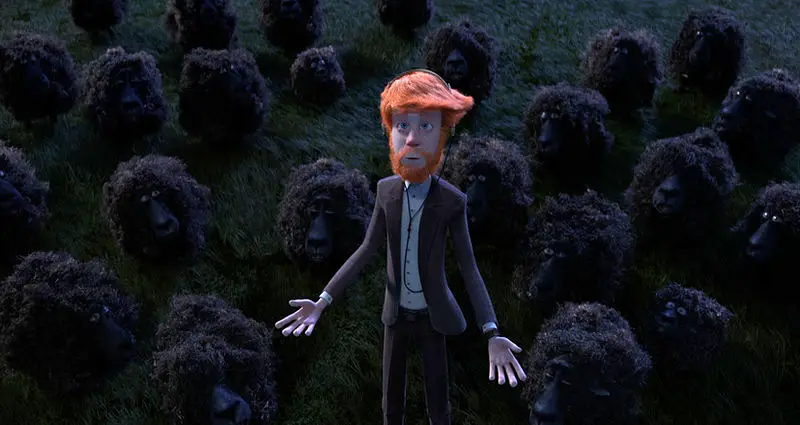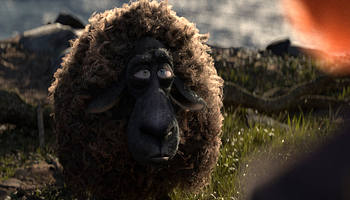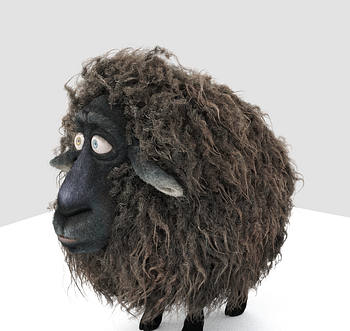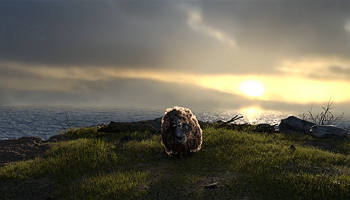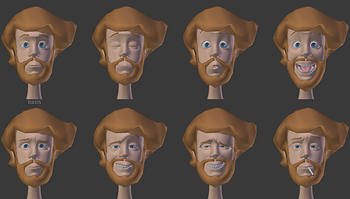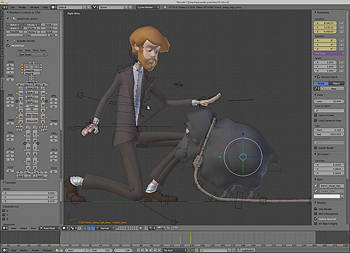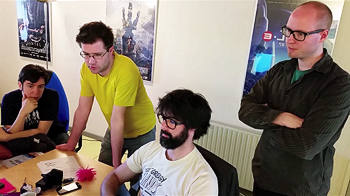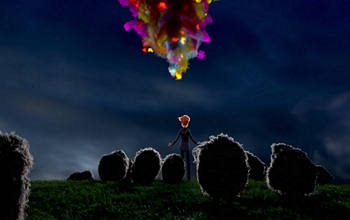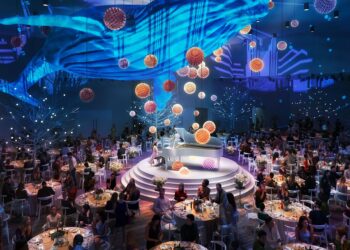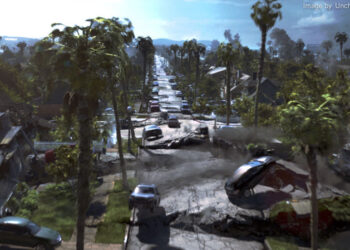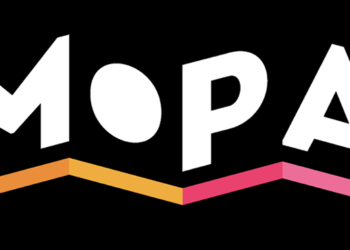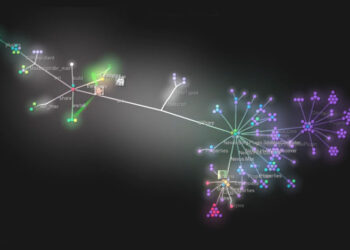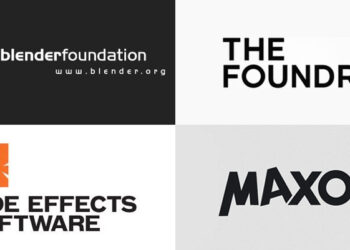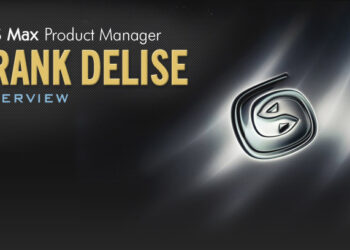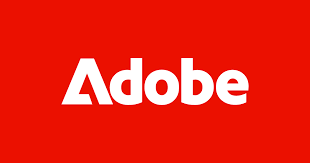Tell us a bit about your visual strategy and what you wanted to transmit visually.
For the first scene, the Island, I wanted to anchor this into
reality the most I could. I wanted to plant the idea that “this is the
real world”. The first world, Franck’s world. So I decided to shoot it
as if there was a camera guy holding the camera, almost like a
documentary. To be with Franck at this very specific moment, maybe his
last. And with the mood of the scene, its pace, we would feel with him
how desperate and empty he feels.
But as soon as the tornado picks up Franck and he’s sent into
the other worlds, the camera and cinematography would have to be
treated more normally with proper dolly moves in a more standard way,
to be more discrete and focus a bit more on telling the story.
The pilot was supposed to be longer (17 minutes) with a longer
beginning (Franck talking with other sheep, taking more time at the
border of the cliff…) and a whole scene for the jungle at the end to
introduce the female character. Since we agreed on focusing on quality
instead of quantity, I always tried to keep the movie under 100 shots
so that every one of them would matter and would be polished. Because I
think that in CG having great, believable shots is a character on its
own, story-wise. If you can make those images look real, you care more
about what happens in the film. At least, that’s what happens to me !
Comparing this short to the first open movie, the great Elephants Dream (Bassam Kurdali, Andy Goralczyk – 2006), shows how much Blender has advanced technically in the last 9 years. The aesthetic in Cosmos Laundromat is impressive. How did the team approach environment design and FX work?
Ton kept pushing us in the early writing phase to include
physics in the story. And since my first idea for the main character
was this sheep on an isolated island, we had to make great hair that
moves. Also, originally the island was supposed to have some very long
grass. It would have needed a strong refactor of the physics in Blender
to make multiple hair systems act all together. And finally the tornado
was an idea to keep pushing the boundaries for the development
department. And on top of that we all agreed on aiming for a render
quality and style close to big studio movies like “Rango”…
So all of these challenges were included in the story to push
Blender as much as we could for this pilot. It was very ambitious and
it also slowed down the project a lot. Its final duration, and the way
it was designed suffered a bit from it because we had to balance
quality and quantity. But if you think it looks impressive,
we did a good job !
The work on lighting also stands out. Please tell us a bit about it.
I did a lot of tests and research. I had a lot of references
from movies and pictures to define the mood and tone of the island, the
laundromat and the jungle. The island changed a lot, at first I was
aiming for a very dark, foggy and gray early morning with dew and low
light. But we couldn’t make this look nice and since we had a
“depressing” opening we decided not to over charge the sadness and
bring some hope to what Franck was doing. So I went for a sunset, with
Franck going to the sun, to leave his darkness behind.
I’m still a bit not totally pleased by this decision since it
would have made it even more obvious how bad Franck’s reality/world is.
Also we wouldn’t have seen things because of the fog, and it would have
been more clear that he lacked perspective and future because he
couldn’t literally see anything. We might have felt more the reasons he
had for killing himself, to end this boring and pathetic life…
But it would have been a very, very depressing opening ! I
tried to make a compromise that still works and make sense, and doesn’t
scare people away…
I worked on the lighting a lot, too. And we tried to keep it
simple and consistent. So it’s mostly and environment map emitting
diffuse lighting and a sun. That’s it ! Sometimes we added an area lamp
to highlight a rim or to bounce a bit more light in a shadow. But we
tried to find a simple thing that would be balanced easily through the
shots and not over-tweak each setup. It helped a lot to sell the
organic and natural look of the camera work. With a bit more time we
would have added some subtle 2D effects too, like flares, glows, soft
edges on lenses and motion blur.
But that’s the time we had, so we focused on a pipeline where
final frames were rendered straight out of Cycles. It’s amazing because
you can see and tweak final renders in the viewport, but it also brings
out the situation where final frames are difficult to tweak much
without re-rendering.
There’s plenty of work dedicated to characters’ expressions. How were the facial rigs built? Also, what improvements were added to Blender to produce the quality hair/fur and its animation?
Juan Pablo Bouza and Daniel Salazar were working remotely from
South America on the rigs. And Angela Guenette who modeled them too,
from North America. They did a great job !
And to me, most of the credit for the quality of the
expressions goes to the animation crew : Hjalti Hjalmarsson, Sarah
Laufer and Beorn Leonard. They did a terrific job interpreting what
we’ve shot with the actors. They shot their own references also to dig
even deeper into some gestures and poses.
On a side note, I also think that the rigs and the facials
could have been better. Designing the characters took a very long time.
And we couldn’t test them enough.
Having tests with the actor’s performance as references while
you can still model/rig and test animations is a key part of character
design and I feel we didn’t have the chance to go through this deep
enough. Then you “fight” with your characters to do things that are not
obvious for the animators, or they fight with it to do what they think
he should be able to do… But the animation team got along with that,
and they compensated this a lot to make the characters as amazing as
possible !
As for the hairs, and their simulation, well… we entered a
world of pain ! Time was flying and we had to find a solution to make
the film (sheep on a grassy island, there was no way not to show it, or
we would have to redesign everything…) So Lukas Tönne solved this
with some awesome tools that made us able to simulate hairs and use
Alembic caches for the render farms. It was not ideal for him since it
was some quickly made “dirty code”, but it worked great for us ! It did
the job ! He really saved us.
How long did production of Cosmos Laundromat First Cycle last and which things did you enjoy the most working on?
I worked almost two years on this. Close to a year on
pre-production, so half time writing, thinking, designing, organizing
and talking about it ! And one year at the institute to make it.
I really enjoyed the writing part with Esther Wouda, the
recording with the actors and the animation dailies. All of this gives
you realtime feedback and a good sense of what the movie will be. It’s
easy to make changes, to talk and see how the characters are or should
be. And the technology to work with on those steps is very simple.
For the rest, 3D is so complex that is can kill the joy of
making a movie. But having a great team to work with, with very nice
people helps a lot to keep having fun and doing great things ! Andy
Goralczyk is some kind of magician that can make incredible
things even when they’re very complex. He took charge of the tornado
like a boss ! From the 3D design to the final renders, I’m still amazed
by what he did.
Manu Jarvinen was also amazing to work with. His skills and
style are very unique. Unfortunately, because the project kept changing
during the early phases, his work and talents don’t shine in the final
movie as much as they could (he did all of the laundromat for example). We wanted him to
design a whole world for the movie, but we didn’t have the time for that
in the end…
Since I’m originally a film editor, I ended up editing the
movie, making the animatic and layouts myself. It was surprisingly
pleasant with Blender, as long as you don’t have video footage and too
many audio tracks. It’s a very intuitive and fast tool to edit with. I
really liked it !

